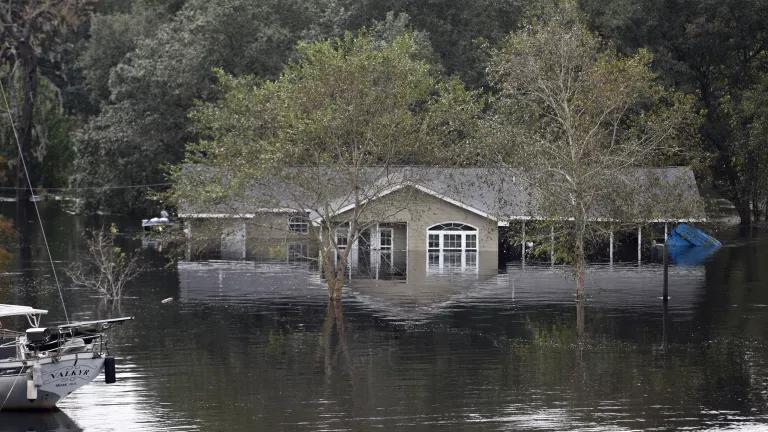FEMA to Release a Flood of Insurance Data

As record-breaking rains and devastating floods continue across the Midwest, many Americans are asking themselves: Am I at risk? Is my home safe from flooding? What is my community doing to prevent flood damage?
The answers to these questions can be surprisingly difficult to find, due to weak property disclosure requirements, restrictions on sharing certain federal data, and, in general, a historical reluctance to make National Flood Insurance Program (NFIP) information accessible to the public. However, that may be changing. On June 3, the Federal Emergency Management Agency (FEMA) announced that they will publicly release 50 million records from the NFIP. As reported in Politico, the release will include “data on every individual flood insurance claim going back to 1978 and every policy sold going back a decade.” The dataset should be available by mid-June on the OpenFEMA website.
This is a huge step forward. NRDC, along with organizations such as the Association of State Floodplain Managers and the Pew Charitable Trusts, has been calling for improved NFIP data availability for years. As my colleague Joel Scata wrote last year, “The public has a right to know where flood damages occur, the cost of those damages, and what communities are doing to reduce their vulnerability to flooding. This information would provide a better understanding of flood risk and the exposure faced by the NFIP, which is especially important as sea levels rise and extreme rainstorms become more common.” NRDC has been asking FEMA and Congress to ensure that much more data is released, including information on the number and cost of policies, the locations of repeatedly flooded properties, the costs of the program to the nation, and the level of enforcement by communities that participate in the NFIP.
Until now, FEMA has released very little NFIP information, making it difficult for people to understand the true extent and cost of flood damages, not to mention how the program itself operates and how it might be improved. And, most importantly, it means that residents often don’t know the flood history of their own homes until it’s too late. To address this, NRDC has urged Congress to increase transparency and availability of information on flood damages, provide residents with a right to know their property’s history of NFIP claims and disaster aid assistance, and require disclosure policies that inform prospective homebuyers about flood-related risks. In 2017, NRDC helped get language in an NFIP reform bill that passed the House; the bill would compel FEMA to release more data via an open, public platform. It would also guarantee homeowners the right to know their property’s flood history, and it would require sellers or lessors to disclose past flood damages to potential residents.
FEMA’s dataset will undoubtedly shed light on many important questions. But this may be just a small amount of the public data and information that we all should have a right to see. The anticipated release of the FEMA data provides a great opportunity to continue the broader discussion about flood risk transparency, disclosure, and data accessibility. In the face of a changing climate, no one should be left in the dark about the flood risk to their home or community.




